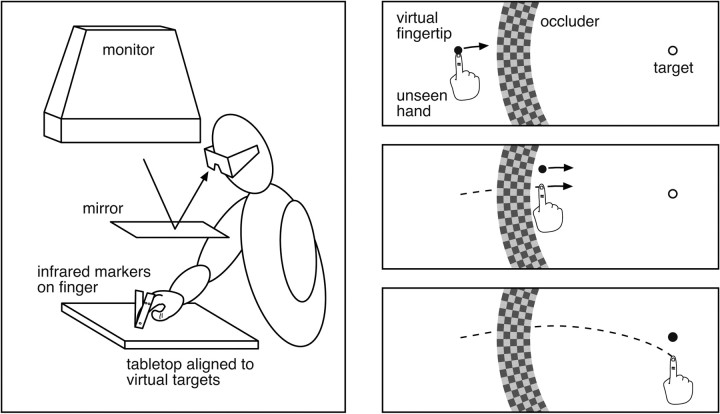Figure 1.
a, Illustration of the experimental apparatus. Subjects were presented with stereo images using shutter glasses and a monitor viewed through a mirror. The mirror prevented a view of the hand and allowed artificial visual feedback to be presented in the subjects' manual workspace. Subjects moved their fingers to visual targets that were aligned with a tabletop. An Optotrak 3020 system tracked infrared markers attached to a subject's finger, and these data were used to render a virtual sphere representing the subject's fingertip (virtual finger). b, Illustration of a trial sequence. Views showa top-down projection onto the tabletop. At the start of a trial (top panel), a target (open circle) and virtual fingertip (solid circle) appear, along with an annular-shaped occluder. The subject's task was to move the virtual fingertip to touch the target. During initial movement, the virtual fingertip coincided with the actual location of the subject's unseen finger. On perturbed trials, when the finger emerged from behind the occluder, its position and direction of motion were changed and no longer matched the actual finger (middle panel). Depending on the perturbation condition, subjects may have had to compensate for the perturbation to successfully reach the target with the perturbed virtual fingertip (bottom panel).

